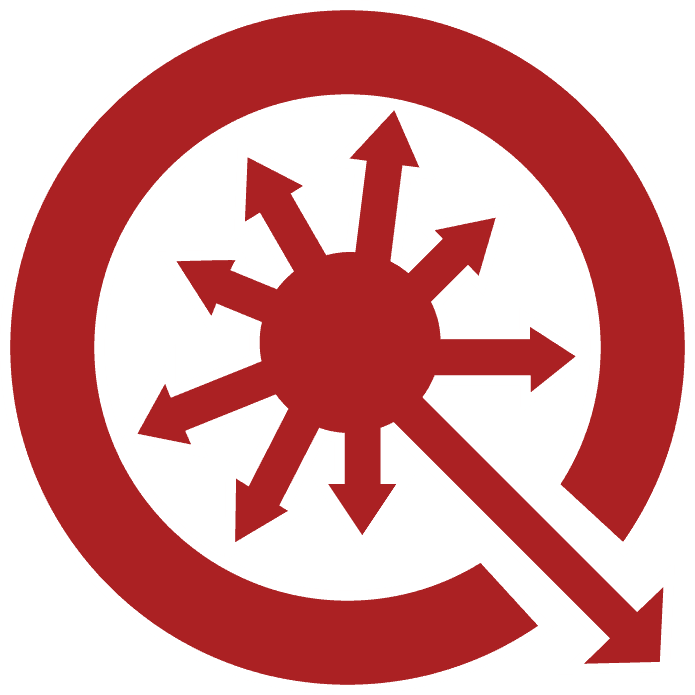Installation procedure for Exhaust Gas Purifier / Scrubbers
Click to download the PDF of the Installation Procedure.
- The Exhaust Gas Purifier / Scrubber should be located as close to the outlet of the engine exhaust manifold (or turbocharger) as possible. The purifier should be located no more than 30” (760 mm) from the engine exhaust manifold outlet (or turbocharger). In addition, the exhaust gas purifier should be located between the engine exhaust manifold (or turbocharger) and the muffler. In order to eliminate harmful diesel exhaust gas pollutants, as much exhaust heat energy as possible is required for proper purifier operation. The hotter the exhaust gases at the inlet cone of the purifier, the more heat energy is available to “oxidize” (reduce) harmful exhaust gas pollutants. The Exhaust Gas Purifier can be installed vertically or horizontally. Do not allow the exhaust gas purifier to contact any structural members of the vehicle or equipment. Avoid locating the exhaust gas purifier in close proximity to electrical components, fuel lines, fuels tanks or any combustible materials.If it is impossible to locate the exhaust gas purifier between the engine exhaust manifold (or turbocharger) and the muffler, then we recommend installing the purifier immediately after the muffler. However, we recommend that the full length of exhaust pipe, the muffler and the purifier be insulated with a commercially available heat wrap tape. Contact the sales office for additional heat wrap tape information. Alternately we do supply a large variety of combination purifier mufflers for Atlas Copco, CASE, Caterpillar, Bobcat, Gehl, Genie, Honda, International, Ingersol Rand, JCB, etc. In some circumstances the use of purifier mufflers may be the only option available. Contact the sales office at 1-(800) 233-6539 for additional information. To install the Exhaust Gas Purifier / Scrubber cut the appropriate length of exhaust pipe from the existing engine exhaust system. Generally the pipe length to be cut is approximately 1.5” (38 mm) to 2.5” (64 mm) less than the overall length of the exhaust gas purifier. The required pipe length to be cut will vary depending on the particular exhaust purifier model. Alternately measure the distance between the stop pins located on the purifier inlet / outlet cones to determine the required cut length.
- Use the directional flow arrow located on the exhaust gas purifier label to orient the exhaust flow direction of the Exhaust Gas Purifier. Install the exhaust pipe into the exhaust gas purifier inlet/outlet cones until the exhaust pipe butts up squarely against the stop pins of the inlet and outlet cone.
- Once the Purifier is installed into the exhaust pipe use wide band muffler clamps or flat band clamps to secure the purifier. We recommend using “Easyseal,” “Torctite,” or “Accuseal” wide band clamps (manufactured by Nelson, Donaldson, Riker, Stemco, etc…).Wide band clamps are readily available at local truck exhaust parts or truck parts jobbers/suppliers. Alternately arc or mig welding can be used to weld the exhaust purifier inlet/outlet cone directly to the engine exhaust pipe. Use type SS309 filler wire or rod with a DC current of approximately 40 to 45 AMPS maximum. Do not weld onto any other part of the purifier or purifier body.
- Torque the wide band muffler clamp bolts to the correct torque specification. Usually 45 to 55 foot pounds torque is sufficient. Start and idle the engine for a period of 15 to 20 minutes. Re-torque the clamp bolts to the correct torque specification. Double check for any apparent exhaust leaks.
- Once installation of the exhaust gas purifier/scrubber is complete, the engine exhaust back pressure restriction should be measured. Use a back pressure gauge/manometer (0 to 40” H20 range) to measure the exhaust gas flow restriction. Remove the 1/8” NPT brass plug located at the 1/8” NPT port on the inlet cone of the purifier. Install the metal probe of the exhaust back pressure restriction gauge into the 1/8” NPT port. Start the engine and operate the engine at high idle and load stall conditions. Measure and note the exhaust gas restriction at both high idle and load stall conditions. Ensure that the total exhaust gas flow restriction is within the engine manufacturers recommendations.
The Exhaust Gas Purifier / Scrubber is now ready for use, if you have any additional requirements, comments or questions please call the sales office at 1-(800)-233-6539.
Click here for detailed information on Foley’s exhaust scrubbers and purifiers, as well as diesel particulate filters.
Written by Dr. Diesel
Knowledge is power. To help our customers, we share tech tips summarizing some of our opinions, knowledge and information of interest that we have gathered since 1916 when Foley Engines opened for business. If you have any questions or comments, go to “Ask Dr. Diesel™” where you can pose questions about engines, clutches, exhaust scrubbers, etc.




